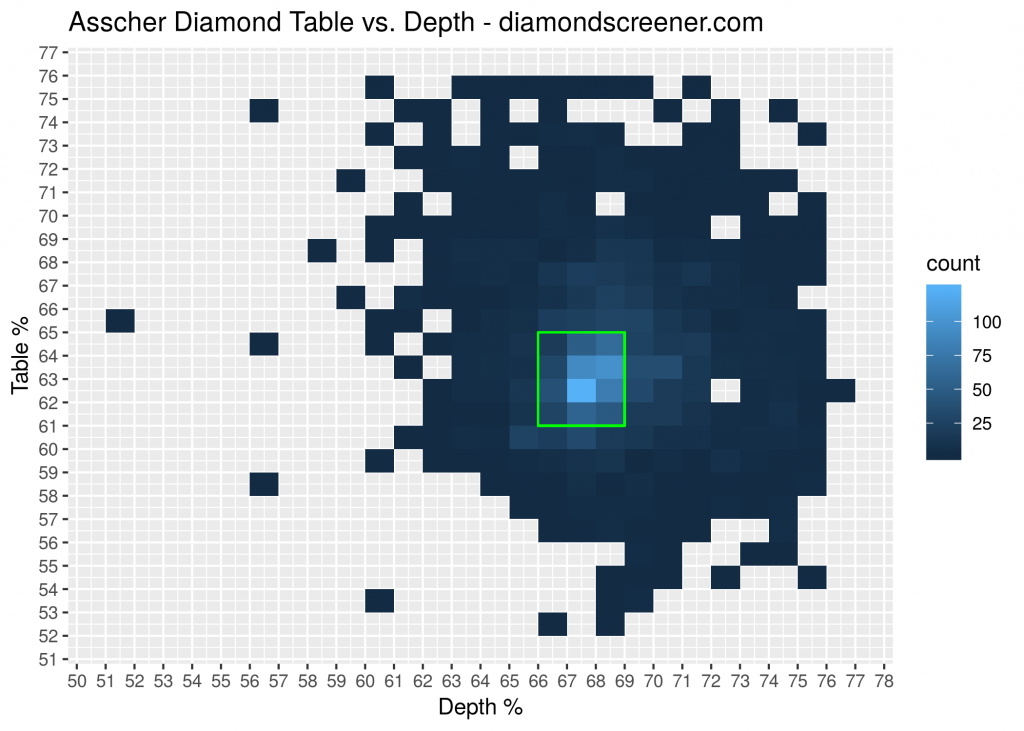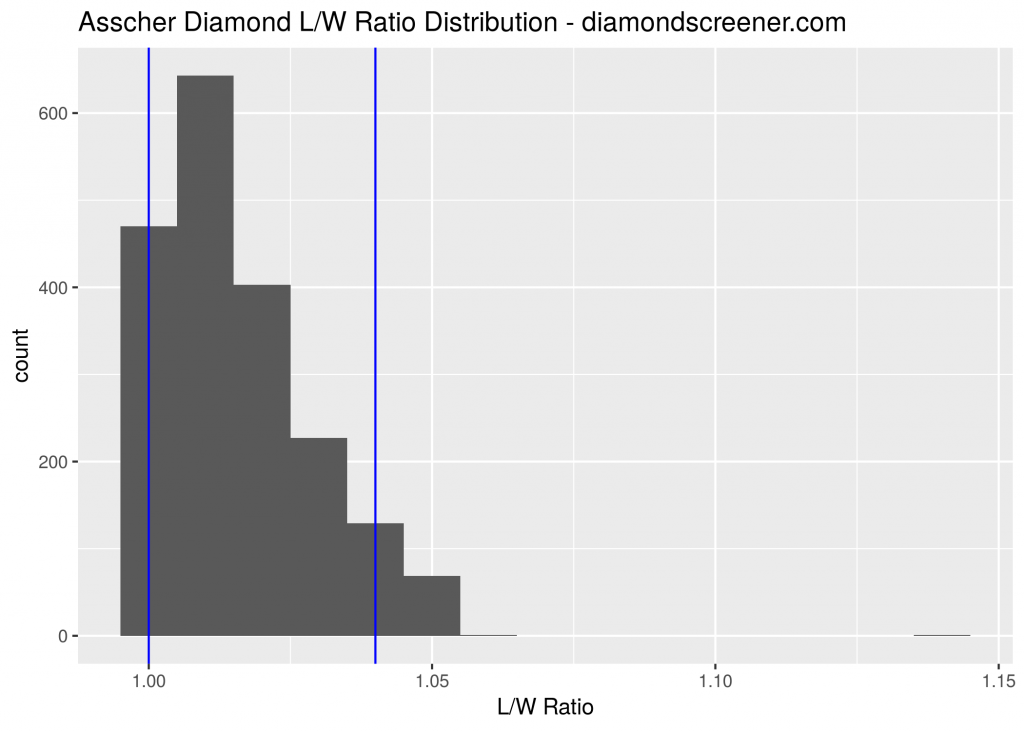Our recommended depth, table, and L/W ratio ranges for fancy shape diamonds are listed below.
| Shape | Depth | Table | L/W Ratio |
| Oval | 60-63% | 56-60% | 1.37-1.55 |
| Pear | 60-63% | 56-60% | 1.55-1.70 |
| Marquise | 60-63% | 56-60% | 1.90-2.10 |
| Heart | 56-59% | 56-60% | 1.00-1.20 |
| Cushion | 67-70% | 59-63% | 1.00-1.04 |
| Radiant | 67-70% | 64-68% | 1.25-1.40 |
| Princess | 71-75% | 68-72% | 1.00-1.04 |
| Emerald | 66-69% | 61-65% | 1.35-1.50 |
| Asscher | 66-69% | 61-65% | 1.00-1.04 |
We derived these recommendations by studying how diamonds are cut in practice. Diamond cutters face two (often opposing) goals: 1) maximize light performance and 2) maximize carat yield from rough. We created heat maps showing the distribution of depth/table combinations and L/W ratios for diamonds available online; the most common proportion combinations represent cutters’ targets and serve as a starting point for what makes a well-cut diamond. Given the cutters’ conflict between light performance and yield, our recommended proportions sometimes differ slightly from the most common proportions in order to shift the balance towards light performance.
Several patterns emerge based on these analyses. Fancy shapes fall into three categories:
- Round derivatives (oval, pear, marquise, heart): Within the round derivatives, oval, pear, and marquise all have the same recommended depth and table ranges; the only difference is the increasing L/W ratio of each shape. Heart diamonds have the same table range as the other round derivatives, but tend to be shallower with shorter L/W ratios.
- Rectangular crushed-ice (cushion, radiant, princess): Within rectangular crushed ice, table size increases from cushion to radiant to princess. Cushion and radiant have the same recommended depth range, while princess diamonds are cut deeper to accommodate the larger table size.
- Step cut (emerald, asscher): Step-cut emerald and asscher diamonds have the same depth and table ranges. The only difference is in the L/W ratio because emeralds are rectangular and asschers are square.
Round Derivatives
- An oval diamond is an elongated round diamond.
- A pear diamond is half of a round diamond blended with a pointed tip.
- A marquise diamond is an even more elongated oval diamond with pointed tips.
- A heart diamond is a short pear diamond with the round end cut with a cleft.
Therefore, oval, pear, marquise, and heart diamonds all have depth and table recommendations similar to a round diamond.
Oval
Below is heatmap showing the counts of all depth and table combinations for oval diamonds available online at James Allen and Blue Nile. Brighter blue indicates more diamonds having that specific depth and table combination. Our recommended range of depth 60-63% and table 56-60% is outlined in green.
The histogram shows the counts of L/W ratios. Our recommended L/W ratio of 1.37-1.55 is highlighted in blue.
For an in-depth discussion of why our recommendations slightly differ from the most common proportions, please see our oval diamond guide.
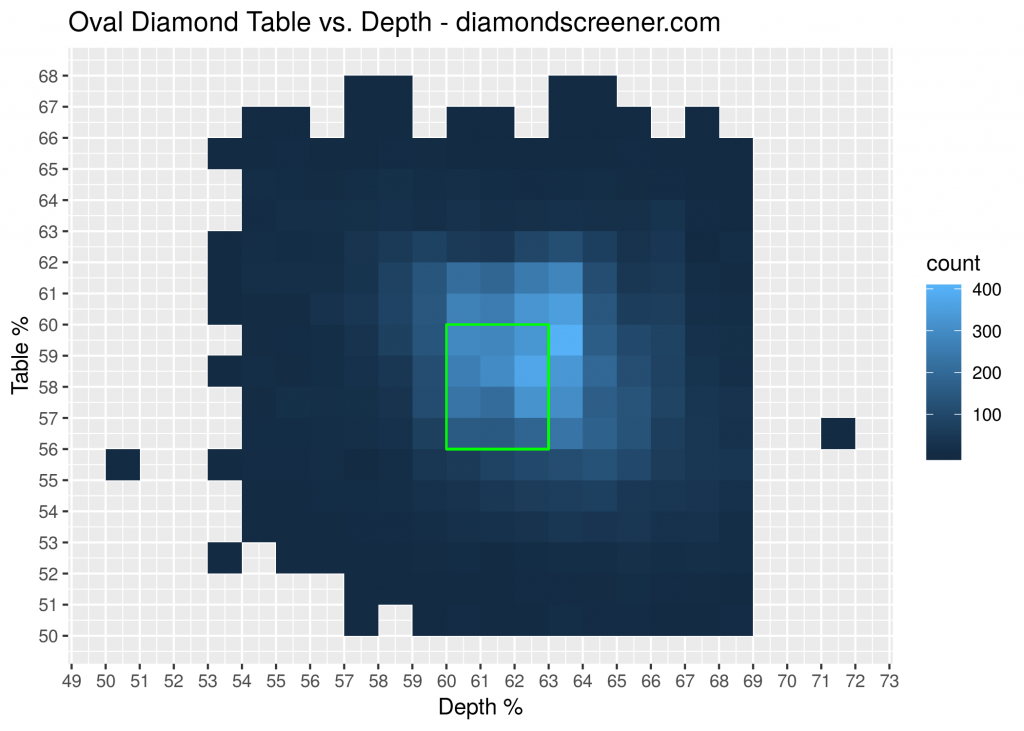
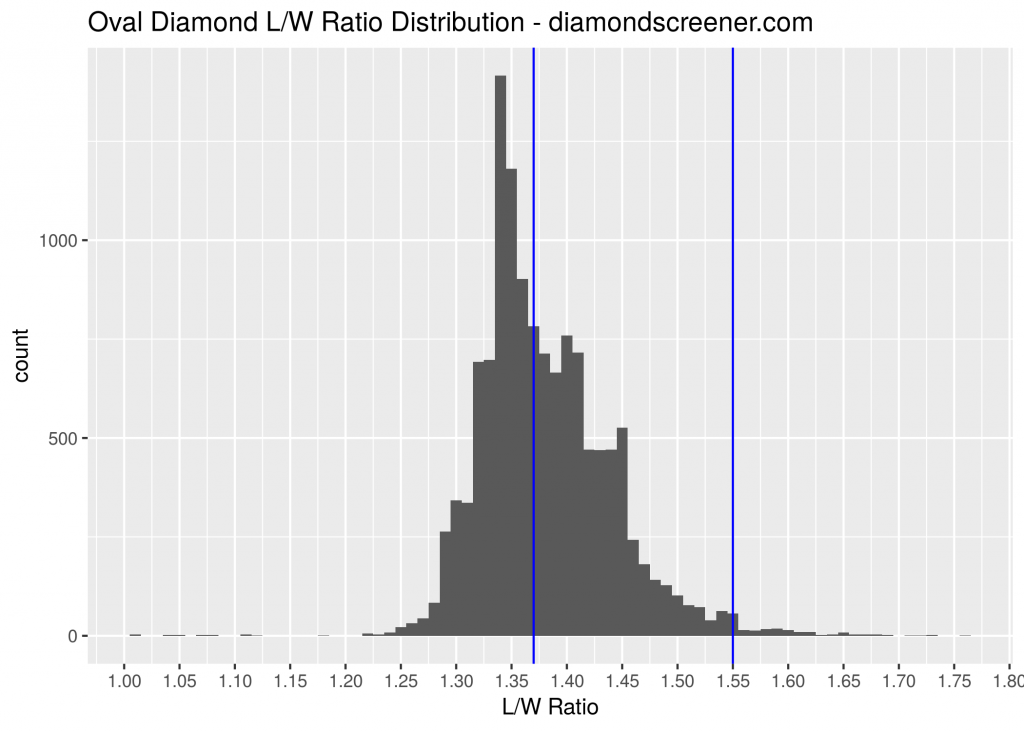
Pear
Our recommended range of depth 60-63% and table 56-60% covers the most popular pear proportions. Our recommended range of L/W ratio 1.55-1.70 is shifted towards longer pears, reflecting the results of a GIA study of personal preferences for L/W ratios in fancy shapes.
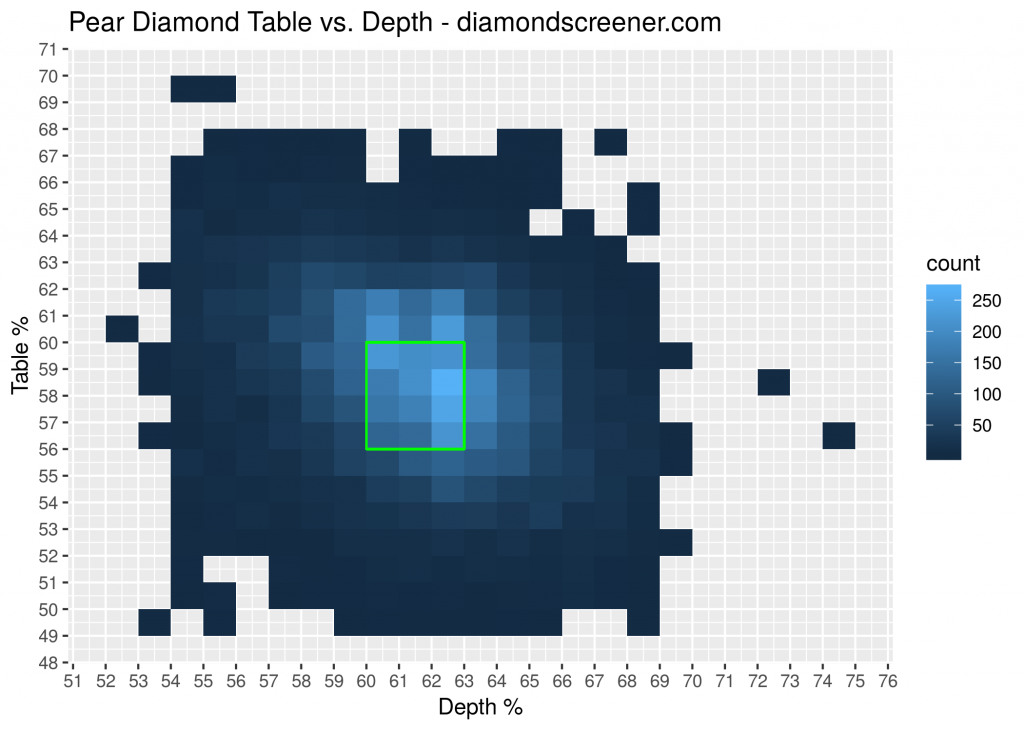
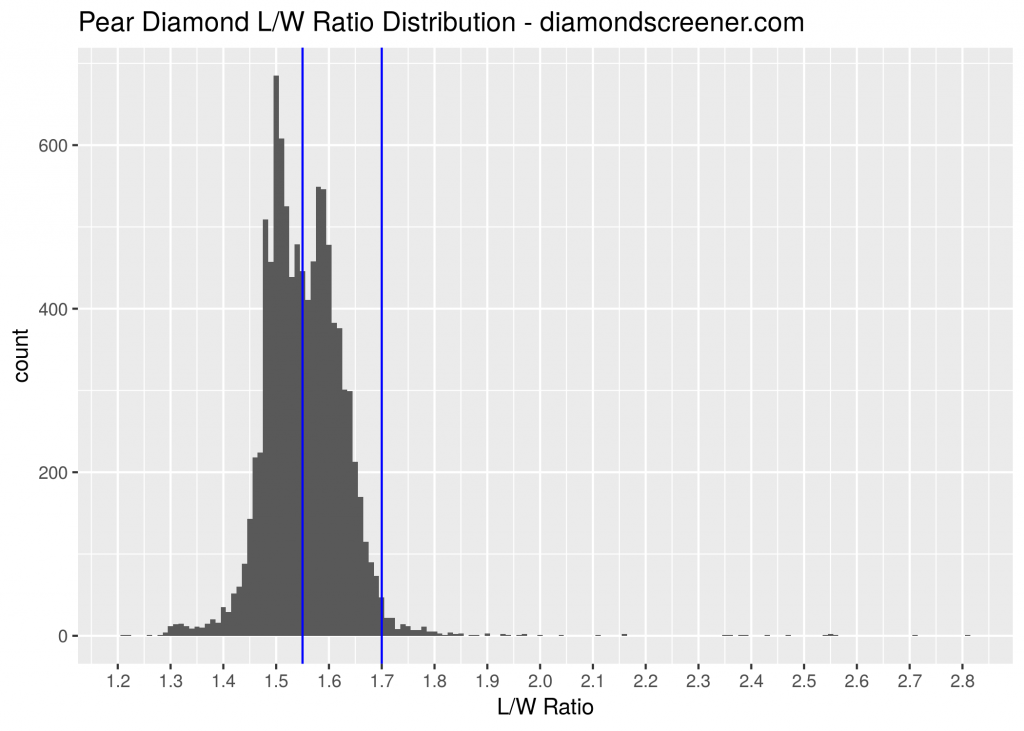
Marquise
There’s a lot of variability in how marquise diamonds are cut. Our recommended range of depth 60-63% and table 56-60% covers the center of the heatmap.
Our L/W ratio recommendations are centered around the spike at 2. They are on the higher end, again based on the GIA study of L/W ratio preferences in fancy cut shapes.
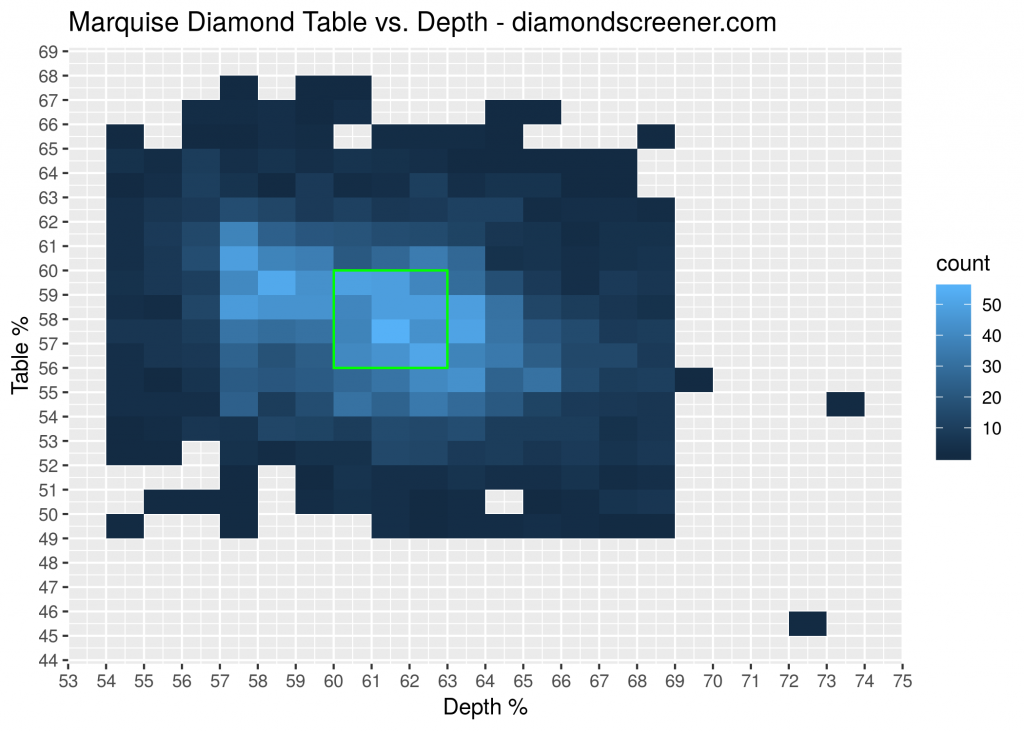
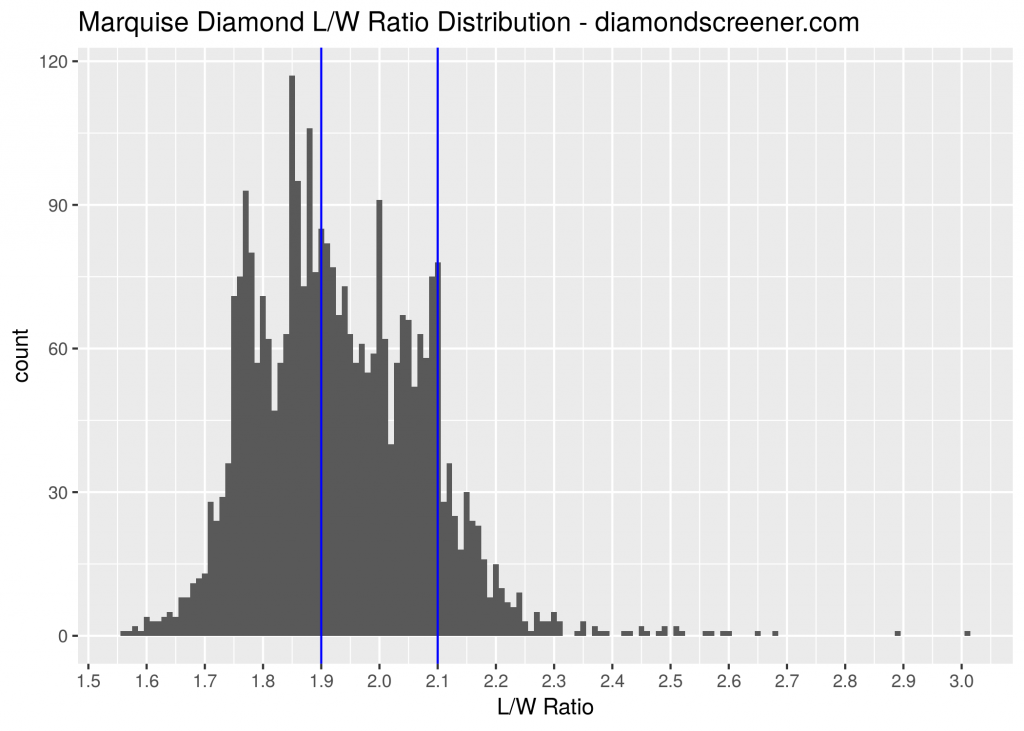
Heart
Hearts are an uncommon diamond shape. Our recommended table range is the same as the other round derivatives, but the depth is shallower based on what cutters have produced. Our L/W range recommendation covers almost the entire L/W range. Heart diamonds need to be evaluated on an individual basis.
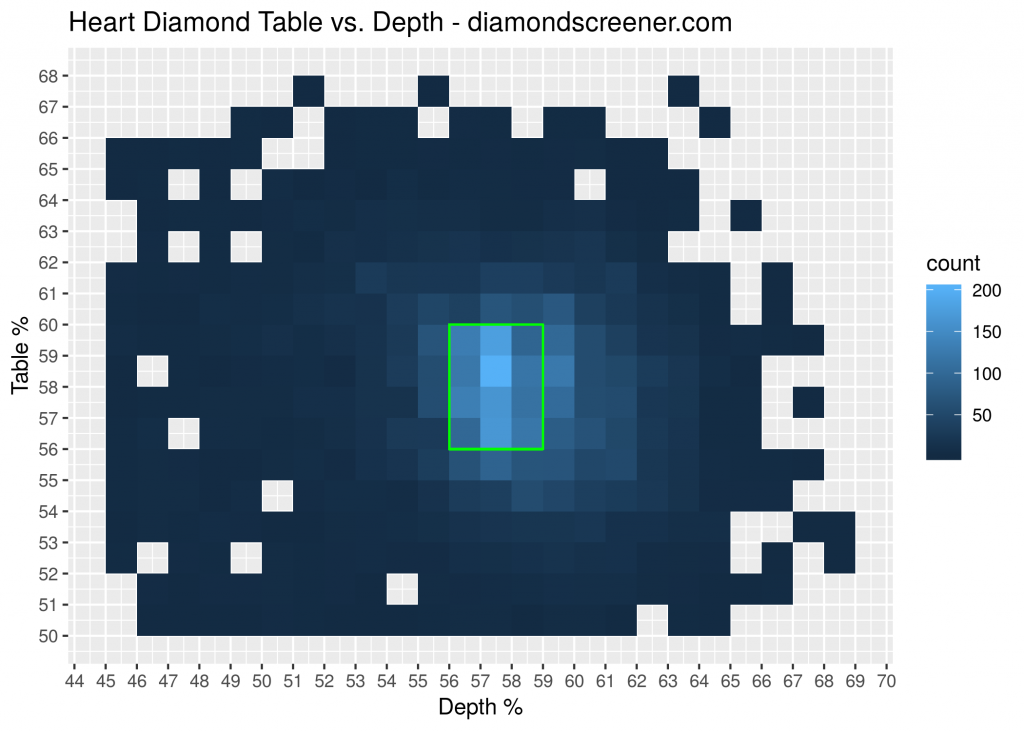
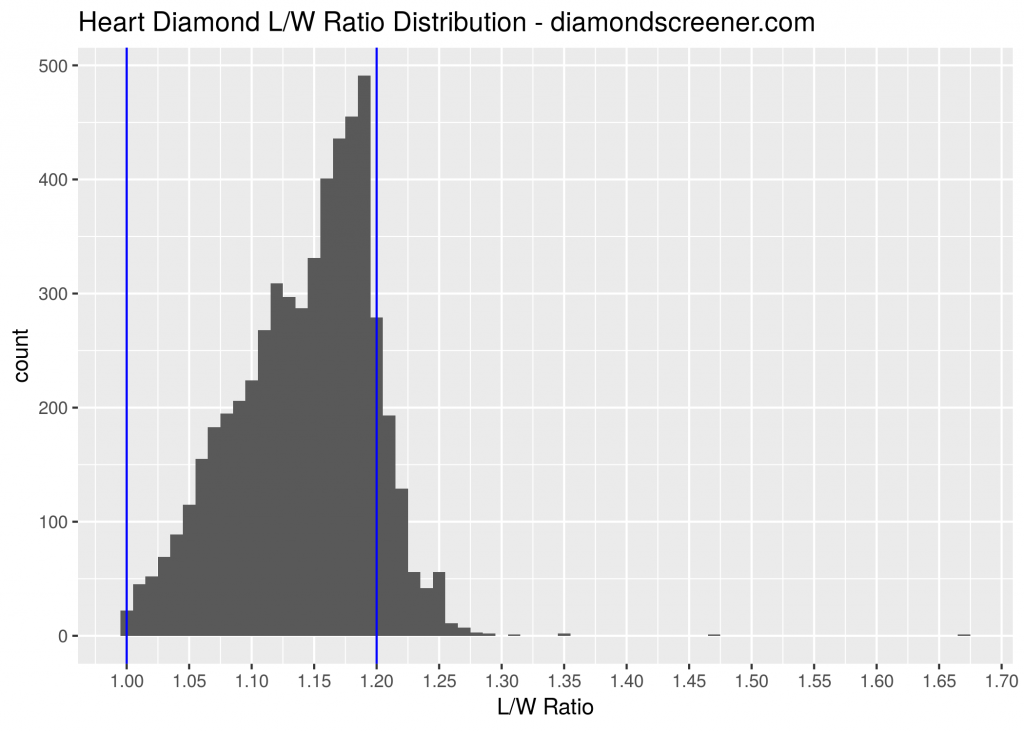
Rectangular Crushed Ice
Cushion
For an in-depth discussion of cushion proportions, please see our cushion diamond guide.
Square is the predominant shape for a cushion. Although rectangular cushions exist, you would be better served with a radiant for a rectangular diamond.
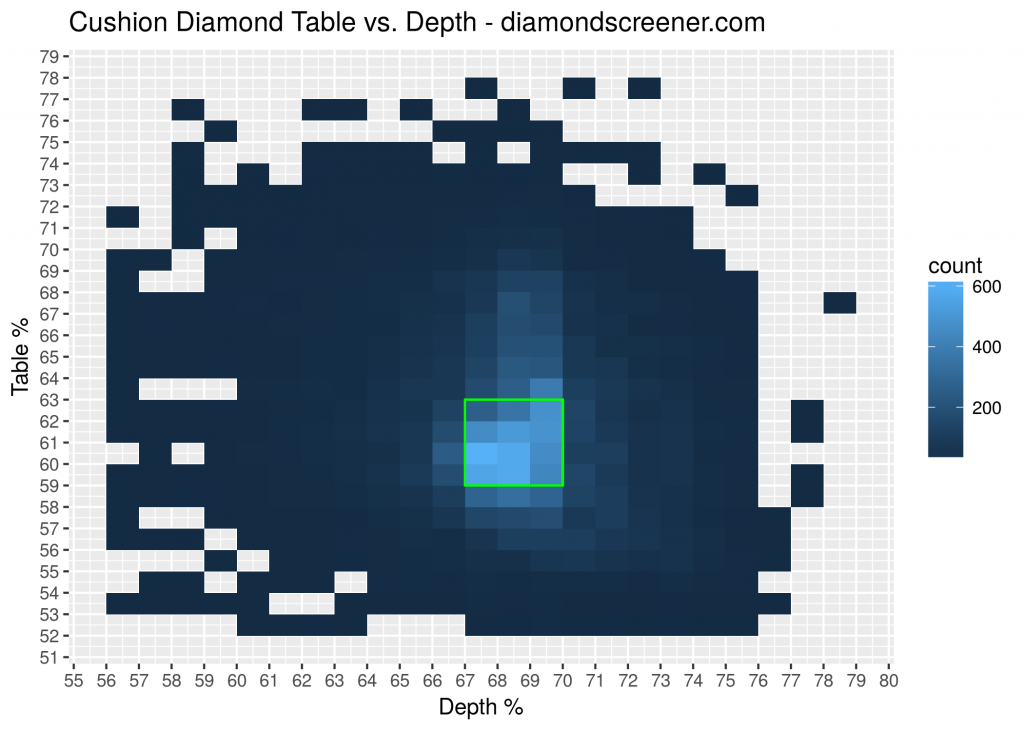
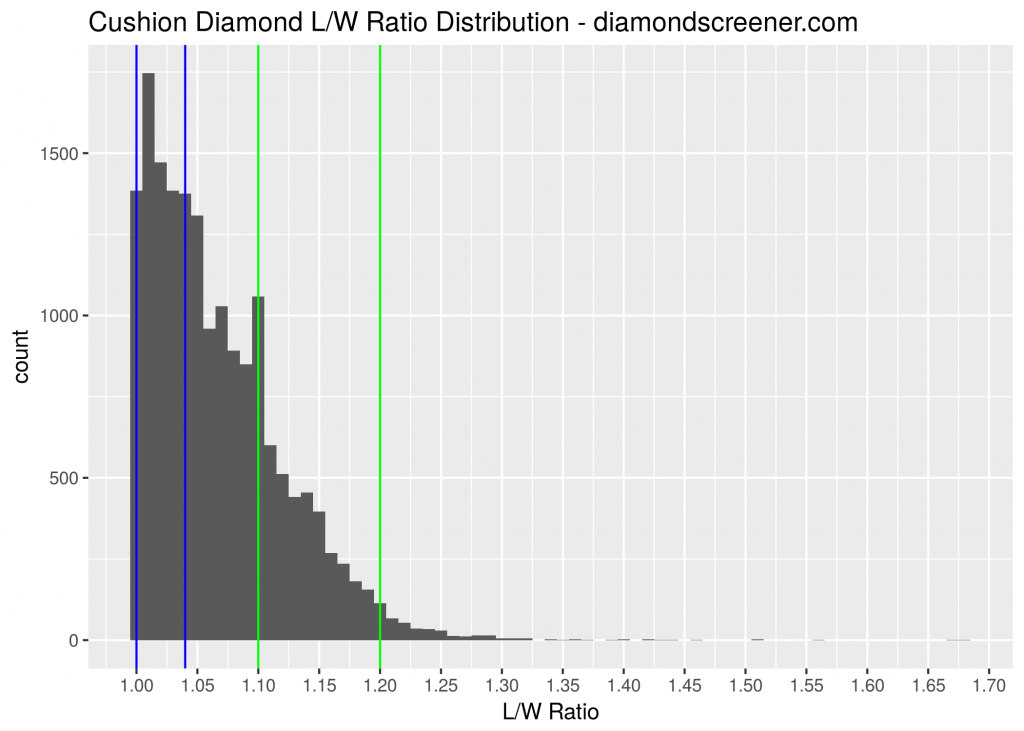
Radiant
Both cushions and radiants cluster in our recommended 67-70% depth range. The table 64-68% range for radiants is higher than for cushions because radiants don’t have the high crown height characteristic of cushions.
With higher L/W ratios, rectangle is the predominant shape for a radiant. Although square radiants exist, you would be better served with a cushion or princess for a square diamond.
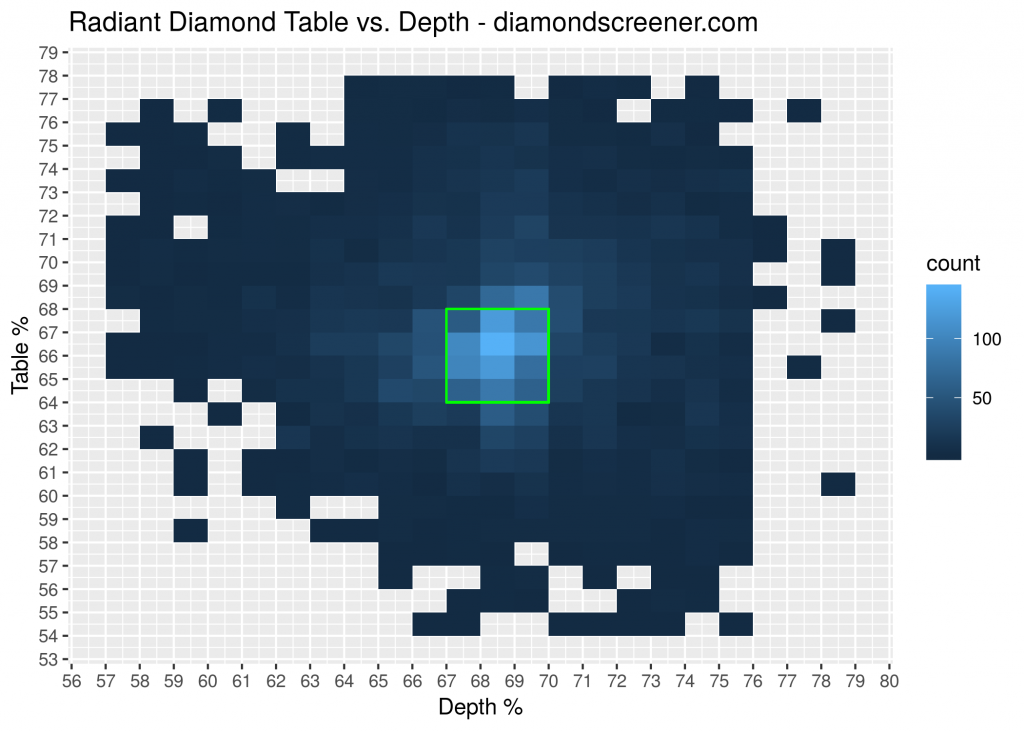
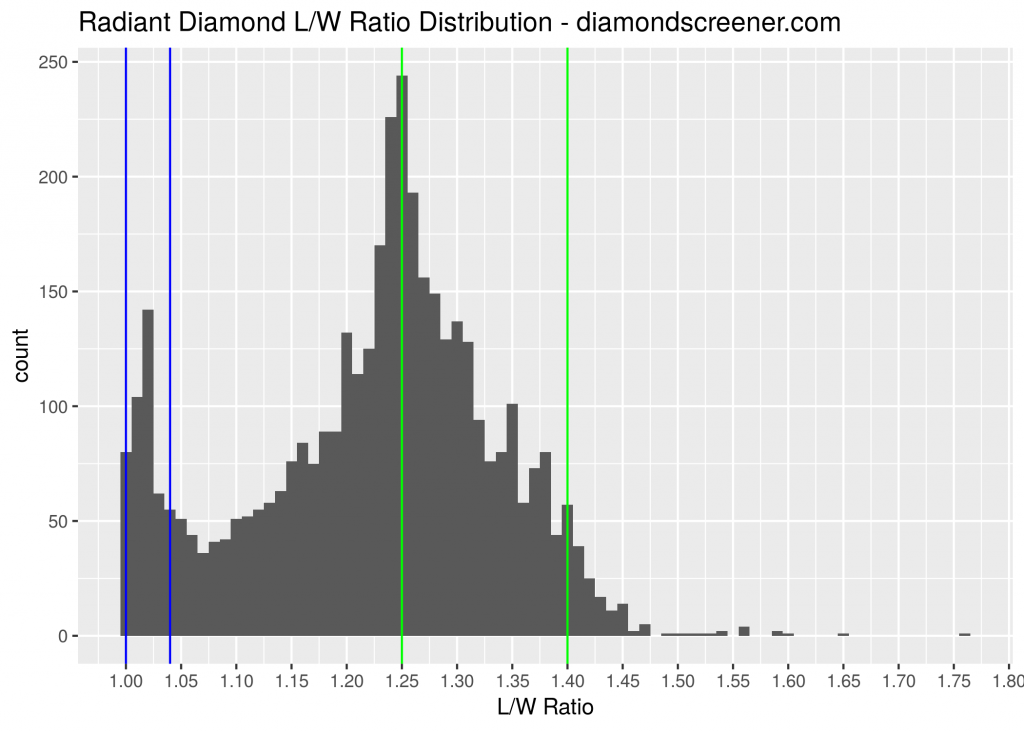
Princess
For an in-depth discussion of princess proportions, please see our princess diamond guide.
Given the higher table size compared to cushions and radiants, the depth must increase in order to maintain sufficient crown height and avoid a flat-top princess that has been cut to maximize yield rather than light performance.
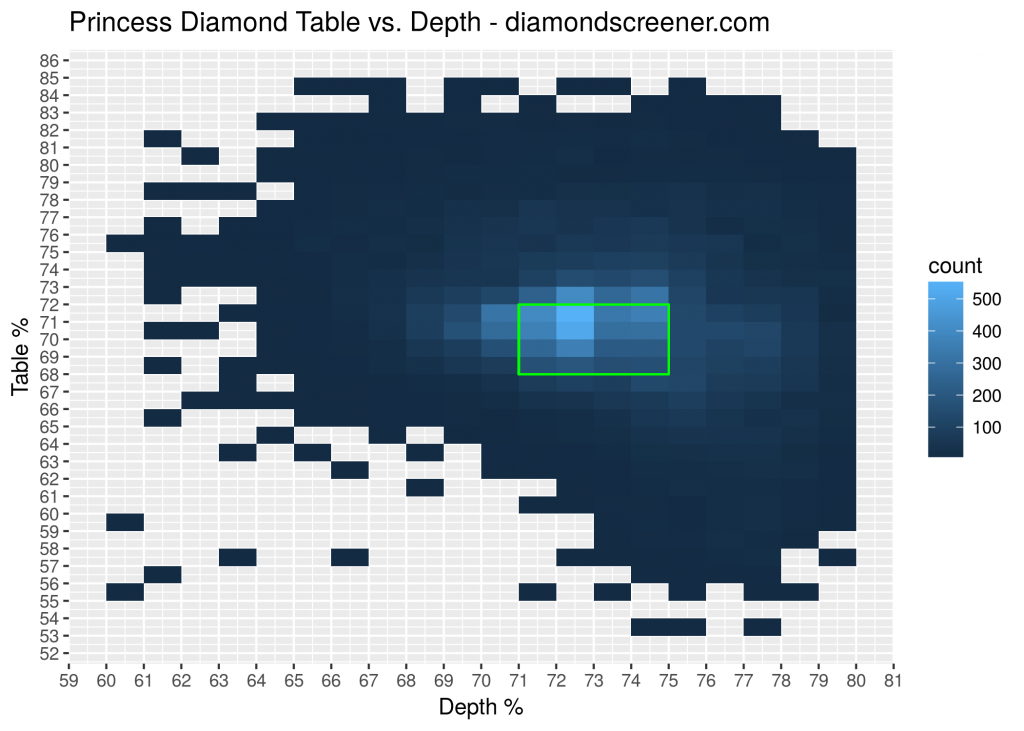
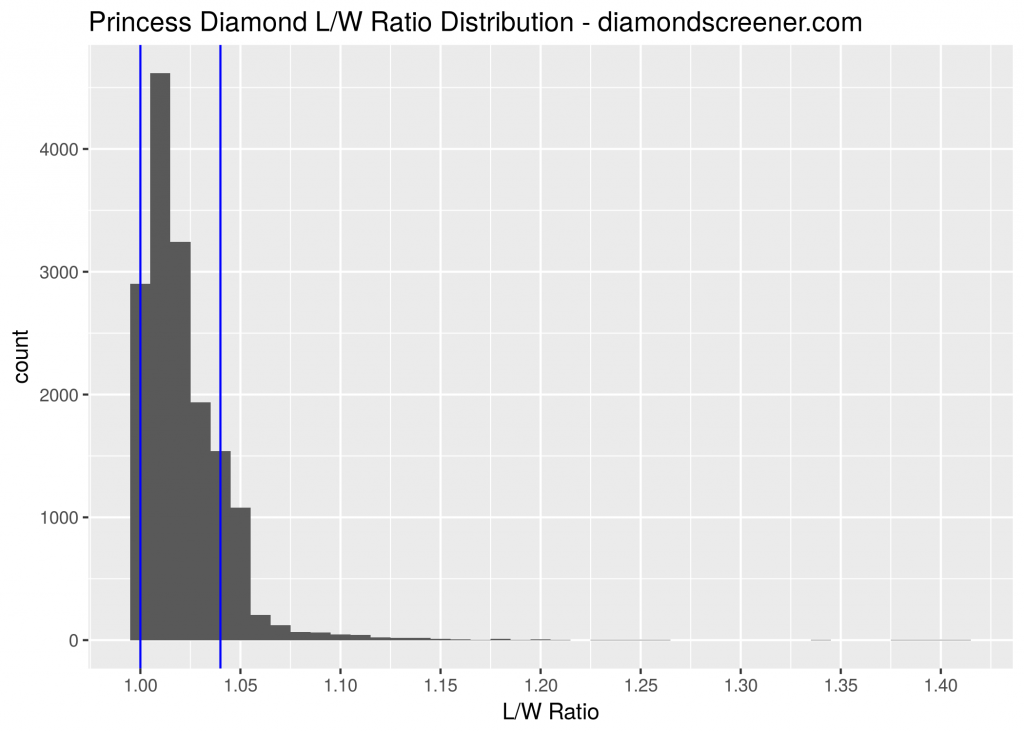
Step Cut
An asscher is a square emerald, so it’s no surprise that they have the same recommended depth and table ranges. The recommended L/W ratio range for emeralds is higher than the mean because of the GIA study of L/W ratio preferences in fancy cut shapes.
Emerald
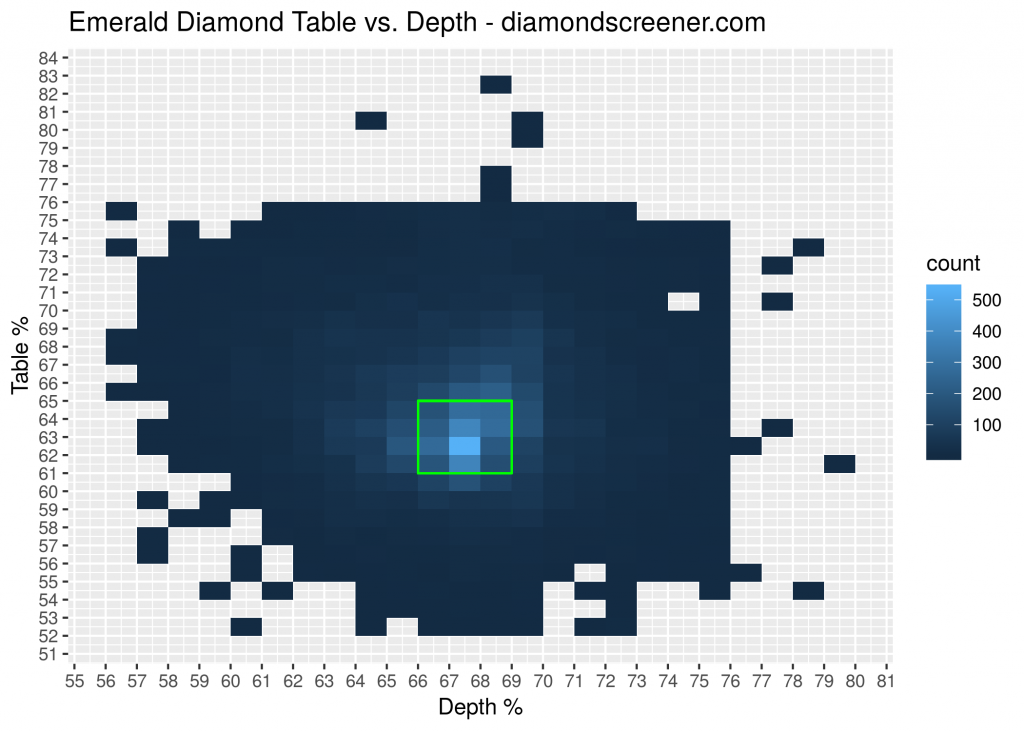
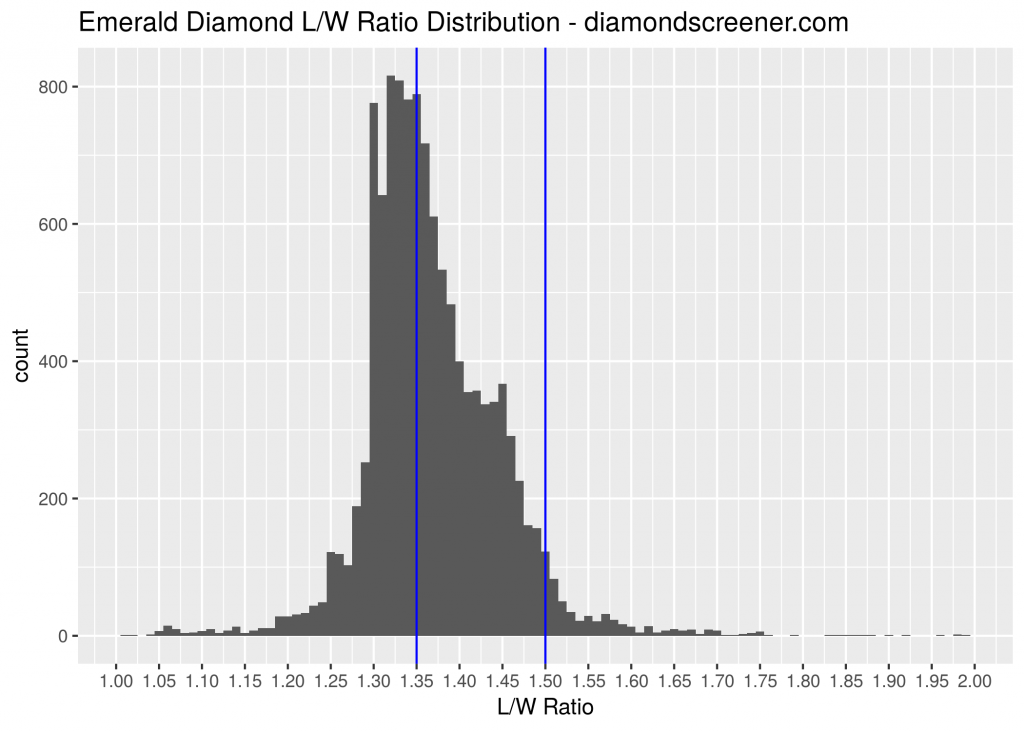
Asscher
